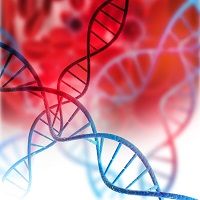Article
Biomarker May Predict Treatment Response in Alcohol Use Disorders
Author(s):
Researchers have identified a biomarker that could help clinicians determine whether patients with alcohol use disorders would benefit from treatment with acamprosate.

A study in Translational Psychiatry suggests a potential biomarker that could help clinicians determine whether patients with alcohol use disorders (AUD) would benefit from treatment with acamprosate. The finding is potentially important, because acamprosate (manufactured by Forest Pharmaceuticals under the brand name Campral®), though used in treatment since 2004 and effective for many AUD patients, is not a cure.
“AUD is a complex and heterogeneous disorder,” the study authors stated. “Thus, biomarkers are required to prescribe this medication to patients who will have the highest likelihood of responding positively.”
A meta-analysis of 17 studies with 4087 individuals demonstrated that continuous abstinence rates are significantly higher in acamprosate-treated patients compared with placebo. But there is a sub-population that does not respond to treatment.
The researchers posited that patients with AUD may differ from non-responders not only on their clinical characteristics, but also based on their biochemical status; thus, the analysis of metabolomic profiles in the study of drug effects (pharmacometabolomics) may help identify potential biomarkers to predict treatment outcomes.
The researchers used this approach to identify significant differences in baseline levels of serum metabolites between alcohol-dependent subjects who remained abstinent (responders) and those who relapsed (non-responders) during 12 weeks of acamprosate treatment in community-based treatment programs. Study subjects were determined to be abstinent from alcohol for at least 5 days and no more than 6 months prior to the study entry and to have no active signs of severe alcohol withdrawal.
“Notably, baseline serum glutamate levels were significantly higher in responders compared with non-responders,” the authors noted. “…Serum glutamate levels of responders are normalized after acamprosate treatment, whereas there was no significant glutamate change in non-responders. Subsequent functional studies in animal models revealed that, in the absence of alcohol, acamprosate activates glutamine synthetase, which synthesizes glutamine from glutamate and ammonia. These results suggest that acamprosate reduces serum glutamate levels for those who have elevated baseline serum glutamate levels among responders.”
The results suggest that elevated baseline serum glutamate levels are a potential biomarker associated with positive acamprosate response. The researchers cautioned that prospective studies using glutamate and/or ammonia levels for selection of potential responders to acamprosate are needed to further validate the finding.
The study was limited to the investigation of metabolic signatures in serum, where the majority of metabolites are metabolized by liver enzymes. “Although useful as potential biomarkers of treatment response, it is not known at this point if similar metabolic signatures reflect the effects of acamprosate in the brain,” the authors noted. “However, evidence indicates similarities in the relationship between glutamate and glutamine levels in blood and the brain through efflux of glutamate.”
Additional limitations of the study include that it focused on identifying biomarkers associated with abstinence in acamprosate-treated alcoholics and did not include a placebo control group, or complete follow-up of all patients in the treatment group. Also, the researchers were unable to completely control for other possible confounding factors that could impact levels of amino acids and their derivatives, including use of other medications and factors such as diet.





